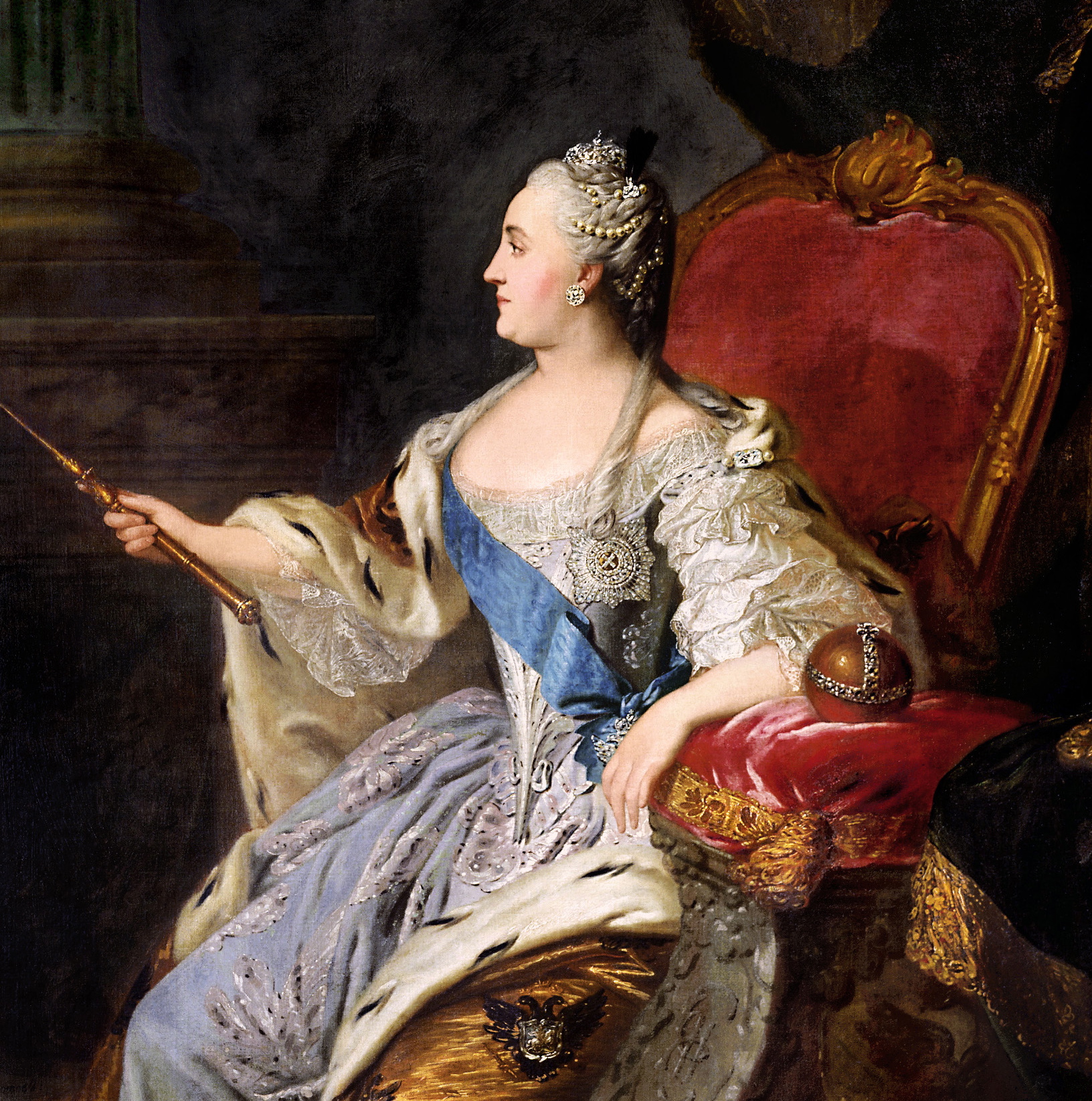Catherine the Great

Two books, a biography of Catherine the Great and a novel about the fabulous art collection she amassed, took me to St. Petersburg, a city I would love to visit someday. The first book was Catherine the Great: Portrait of a Woman by Robert K. Massie. After seeing her crowns, dresses and paintings in an exhibition at the National Museum of Scotland in Edinburgh last summer, I was eager to learn more about this 18th century Russian empress. Trapped in a dreadful marriage, she educated herself by reading Enlightenment classics in French and corresponding with the authors. Even before becoming Empress in 1762, she kept a steady stream of lovers, dismissing them when they became boring.
The pages came alive on Sunday, March 26, when we heard Barbara Rinella, a professional book reviewer and a resident in our community, don an elaborate dress and crown and tell Catherine’s story after dinner at our club. For 45 minutes Barbara kept us spell-bound, illuminating all the major themes of the book–Catherine’s Lutheran upbringing in Germany, her conversion to Russian Orthodoxy, her smallpox inoculation, her attempts to improve the lives of serfs, her military adventures, her love affair with Potemkin, and her canny purchases of great art that fill the Hermitage in St. Petersburg. This link, supplied by my book group friend Jan, shows some of the beautiful palaces she had built.
The second book is a 2006 novel by Debra Dean: The Madonnas of Leningrad. This book about art and memory takes the reader on a first-person tour of the Hermitage, the nucleus of which was built and furnished by Catherine the Great. During the WWII siege of Leningrad (previously and currently St. Petersburg) the Germans were determined to level it. Our tour guide, Marina, lived in the museum during the 900-day siege after helping take masterworks out of their frames for safe-keeping in the Ural Mountains. But having survived the war and emigrated to America, now she is in her early 80s, living in Washington state and confusing her family by talking about the past as though it were the present. Marina’s long-term memories are so rich that they deserve special preservation and yet her children have no idea what she is talking about.
At the Hermitage website you can find first-hand accounts by museum staff members who packed up all the paintings, then stayed in the Museum during the siege, constantly on watch to put out fires. Perhaps it’s time to re-read The 900 Days: the Siege of Leningrad by Harrison Salisbury, the 1969 non-fiction classic that first made me aware of how over a million people died and how almost two million survived the Nazi siege that began in October 1941.
A third book came to me by way of my daughter Lilli, whose book group in Cambridge MA includes Mara Vorhees, co=author with her husband Gerald Easter, of a recently published work of narrative non-fiction, The Tsarina’s Lost Treasure. Here’s the review I wrote in December 2020 on Amazon:
In the ninth month of pandemic sheltering, The Tsarina’s Lost Treasure: Catherine the Great, a Golden Age Masterpiece, and a Legendary Shipwreck, by Gerald Easter and Mara Vorhees, was a special treasure for an avid, but stymied, traveler and museum-goer like me. Catherine the Great had long held me in thrall, but I had never heard of Gerrit Dou, a Dutch Golden Age painter. He is missing from the National Gallery of Art, but what a magnificent painter he was! No wonder the Dutch held his works close. Nor was I aware of efforts to find the ship that sank in the Baltic Sea in 1771, with one of Dou’s greatest paintings aboard. That work and several others were on their way to Catherine the Great’s Hermitage. Could they have possibly survived? Easter and Vorhees, who excel at narrative nonfiction, took me on a fascinating voyage that I will long treasure.
Leave a Reply